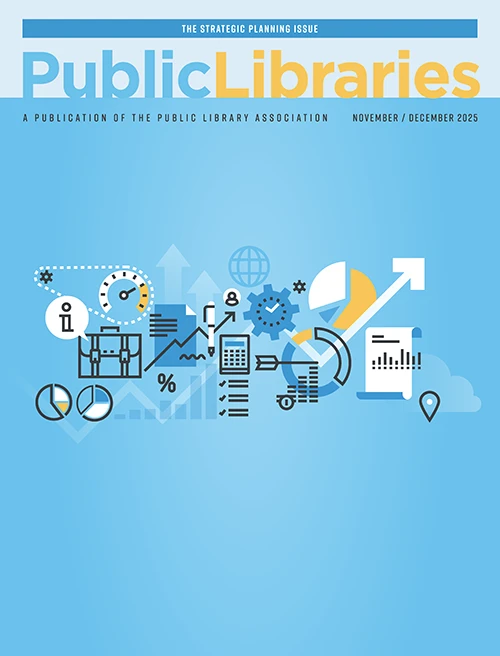Emerging Tech Trends Require Change Management
Recently I wrote here about extremely accurate facial recognition software could literally change the face of how libraries do business. It’s one of many amazing advancements on the horizon, and all of them will transform libraries from what they are now to something…well, we don’t know yet.
All this can only come about if libraries adopt a form of change management. Change has become the norm for libraries as it has with many other businesses who wish to remain competitive. The rise in popularity of the e-book and digital libraries, the transformation to digital centers featuring computer and Wi-Fi access, and libraries as community meeting centers has challenged what used to be the norm, and replaced it with an ever evolving one instead.
Here are five emerging technology trends that will benefit both staff and patrons.
Tablet Loaner Programs
Desktops once lined the tables of library computer centers. It is certainly easier however, to read an e-book on a tablet or Chromebook instead. While fiction books were the first to make the transition, many nonfiction and reference books have made the move to e-format. So patrons can, instead of browsing the stacks, sit with a tablet or iPad and read the same materials, even printing parts they need for later reference.
Many magazines and newspapers have also digitized their archives, making them searchable. Special collections from libraries (such as this one from the University of Idaho) have at least part of their records available online. Local search engines housed on tablets or laptops may become a vital part of any research library.
Virtual Reality
Virtual reality is emerging as a new form of storytelling and educational gaming. Creating virtual reality spaces in libraries will provide patrons access to this content.
Virtual field trips conducted from libraries can be enhanced by directing patrons to other related content when the field trip has been completed. Educational games can become a regular part of children’s programs, and making documentaries and other films a part of the libraries digital collection will further enhance educational opportunities.
This will not only increase patron visits and engagement but also provide access to this technology to visitors who would not otherwise be able to utilize it.
3-D Printing
Maker stations are not new, but new uses for them are always emerging. Some libraries have managed to leverage this technology creatively. The following are examples from WebJunction:
- Fayetteville Free Library was able to locate its FabLab in a previously unused space, which was formerly (and appropriately) part of the Stickley Furniture factory, renowned makers in the Arts and Crafts movement.
- The Westport (CT) Public Library chose to locate its makerspace right in the middle of the library and now has an active event and activities calendar.
- The Arrowhead Library System (WI), has a mobile makerspace that is shared between seven libraries in southern Wisconsin.
- In the Netherlands, a mobile FabLab is bringing twenty-first-century making to primary and secondary schools in rural and remote communities.[1]
3-D metal printing will be the next production method for many objects, as it is both less expensive and faster than conventional methods.[2]
Libraries engaging adults as well as children in this activity are potentially helping prepare them for the future in many job markets.
Robotics
This is not the kind of robot that will replace the librarian; rather, this is the kind of robot that can, among other things, teach kids to write computer code. Some libraries are even acquiring robots that can be checked out by patrons, just like other library materials.
Maxine Bleiweiss, director of the Westport Library, which already has 3-D printers, says, “We believe robotics is the next disruptive technology that people need to know about.”[3] The library was the first in the nation to acquire sophisticated humanoid robots made by the French robotics firm Aldebaran.
The robots don’t do anything they are not programmed to do, and so patrons learn the Python language to make them perform tasks from reading stories to children to dancing. The library is even talking about doing robot poetry slams, since the robots gesture when they talk just like humans do.
Drones
Much like robotics, this emerging field is being explored by libraries in a number of ways. Besides keeping patrons informed of FAA regulations regarding drones, including the need to register any drone that is over .55 pounds (8.8 ounces) when flight ready, some libraries are providing demonstrations and instruction as well.[4]
The potential uses for drones extend far beyond demonstrations and patron education, including book drop offs and pickups for patrons unable to make it to the library, content creation, and research.
Drones will likely be a part of the technology resources offered by libraries. The library at the University of South Florida even experimented with lending drones to students.[5]
These are just a few ways emerging technology can help both patrons and librarians going forward. The library is changing, and in the future they probably will not look much like they do today, but through change management and the embracing of new technology, libraries will continue to be the community centers they have always been.
References
[1] Betha Gutsche, “3D Printers: a revolution headed for your library,” WebJunction, November 9, 2015.
[2] “3D Metal Printing | 3D Printing Technologies,” YouTube video, 5:00, courtesy of Ex One, posted by “i.materialise,” December 10, 2010.
[3] Maxine Bleiweiss, “Beyond bookshelves: Meet your public library’s robots” by Mark Herz, Marketplace, October 10, 2014.
[4] Andrew Stengel, “Your Drone Christmas Gift Could Cost You $27,000 Or More: FAA Requires UAS Registration,” Huffington Post, January 4, 2016.
[5] Jareen Imam, “Check it out: Florida university library to lend drones to students,” CNN, June 23, 2014.
Tags: 3D printers, drones at the library, emerging trends in library technology, libraries lending tablets, robotics, STEM, technology trends, technology uses for libraries, virtual reality












